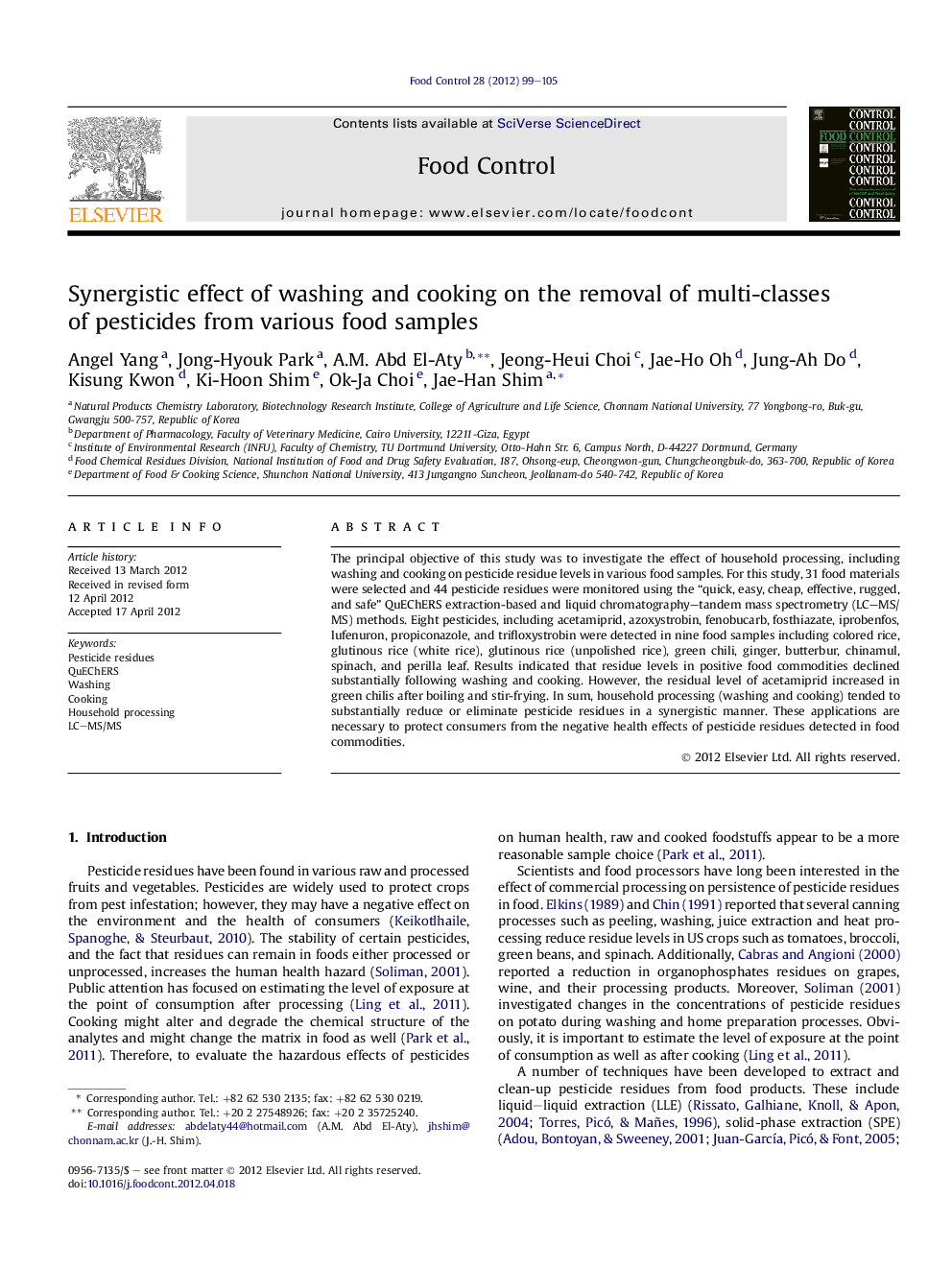| Article ID | Journal | Published Year | Pages | File Type |
|---|---|---|---|---|
| 6393221 | Food Control | 2012 | 7 Pages |
The principal objective of this study was to investigate the effect of household processing, including washing and cooking on pesticide residue levels in various food samples. For this study, 31 food materials were selected and 44 pesticide residues were monitored using the “quick, easy, cheap, effective, rugged, and safe” QuEChERS extraction-based and liquid chromatography-tandem mass spectrometry (LC-MS/MS) methods. Eight pesticides, including acetamiprid, azoxystrobin, fenobucarb, fosthiazate, iprobenfos, lufenuron, propiconazole, and trifloxystrobin were detected in nine food samples including colored rice, glutinous rice (white rice), glutinous rice (unpolished rice), green chili, ginger, butterbur, chinamul, spinach, and perilla leaf. Results indicated that residue levels in positive food commodities declined substantially following washing and cooking. However, the residual level of acetamiprid increased in green chilis after boiling and stir-frying. In sum, household processing (washing and cooking) tended to substantially reduce or eliminate pesticide residues in a synergistic manner. These applications are necessary to protect consumers from the negative health effects of pesticide residues detected in food commodities.
⺠The effects of household processing on pesticide residue levels were investigated. ⺠Residue levels were substantially declined following washing and cooking. ⺠The household processing tend to remove the residues in a synergistic manner.
